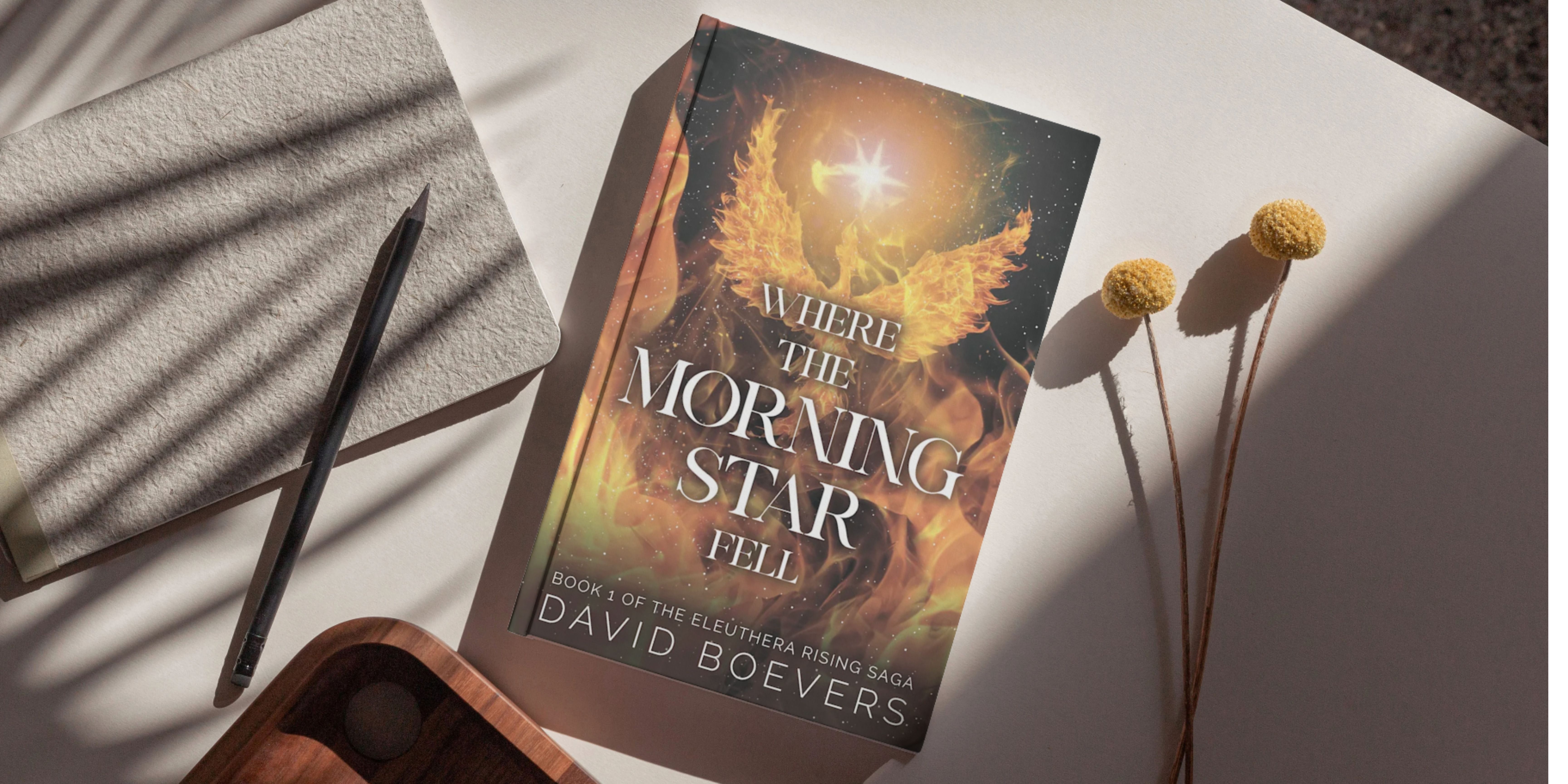Beyond the Sentence: Building an Editor That Actually Gets It
This is part two of a two-part interview with Will Frasier, founder of Story Stream. Check out Part One here.

Q: Some writers worry digital tools are built to correct them, not collaborate. What would you say to someone hesitant to trust a tool with their story?
A: One of the core beliefs behind Story Stream is that AI is not a great writer. That might sound strange, especially since AI writes a lot of my emails now. But there's a difference between generating text and telling a human story.
AI is great at mimicking voice, but it doesn't understand the human condition. It has never lost someone it loved. It has never felt the ache of nostalgia. It has never experienced the thrill of a first kiss. It can simulate these things in text, but it doesn't know what they mean. And that's why it can't replace you as a storyteller.
Story Stream isn't trying to write your story for you. It's designed to help you see your own work more clearly. It's like having a thoughtful reader who can point out patterns you might have missed or highlight moments that could be stronger. It's not about "correcting" your work according to some arbitrary standard. It's about giving you specific, actionable feedback based on what you are trying to do. It helps you see your work more clearly, so you can strengthen it without losing what makes it yours.
We built Story Stream as writers ourselves. We don't train on your work. We don't sell it. We're not here to tell you what to write. We're here to support your vision, not replace it.
Q: You've said you want feedback that feels human. What does that look like in the context of Story Stream?
A: Human feedback is contextual. When an experienced editor reads your work, they're not just looking at grammar or sentence structure. They're thinking about the whole story. They notice when a character's actions feel inconsistent. They feel when the pacing drags. They recognize when a single sentence can carry the weight of an entire chapter. Humans notice that. So we built Story Stream to notice it too.
Stories are complex. They're not just about plot or word count. They involve pacing, theme, structure, dialogue, character development, and so much more. A good human editor understands all these elements and how they work together. They don't just say "this is wrong" - they help you understand why something isn't working and offer thoughtful suggestions for how to improve it.
We've designed Story Stream to provide that kind of holistic, thoughtful feedback. It doesn't just flag issues; it explains why they matter. It doesn't just offer generic advice; it gives you specific insights tailored to your unique story. And most importantly, it respects that you, the writer, are the final authority on your work.
The tool analyzes your story on multiple levels - from the sentence level up to the overall narrative arc. It looks at how scenes connect, how characters develop, how themes emerge and evolve. It's designed to see the big picture and the fine details, just like a human reader. It's rooted in understanding, not just measurement.
Q: Story Stream is built on powerful tech, but it doesn't feel like a typical tool. How did you balance structure and intuition in the design?
A: That's exactly what we were aiming for. We wanted to build something that feels like working with an editor, not a spell checker. The technology should be invisible - you shouldn't have to think about algorithms or models when you're trying to refine your story.
The balance comes from understanding that writing is both art and craft. There are technical elements that can be analyzed systematically, but there's also the magic that happens when everything comes together just right. We wanted to honor both. We see Story Stream as an editorial tool that happens to use AI, not an AI tool pretending to be an editor.
The real balance comes from how we designed the system. We worked closely with an experienced editor to understand how they approach manuscript evaluation. What questions do they ask? What patterns do they look for? How do they communicate feedback in a way that's helpful rather than discouraging? Then we built technology that could support that kind of thoughtful analysis. There's a lot of editorial wisdom embedded into the system, things that aren't just technical patterns, but craft principles that writers care about.
We also put a lot of thought into the interface. We wanted it to feel intuitive and supportive, not cold or judgmental. The feedback is presented in a way that invites exploration rather than dictating changes. And we've built in multiple ways to engage with your story - from high-level summaries to detailed scene analysis. Different writers have different needs at different stages of the process, and we wanted to honor that.
Q: What role did other writers or editors play in developing Story Stream?
A: They've been essential. From the very beginning, we've worked closely with writers and editors to understand their needs and challenges. We've conducted interviews, run workshops, and gathered feedback at every stage of development.
One of our key collaborators is an experienced developmental editor who's worked with both major publishers and independent authors. Her insights have been invaluable in helping us understand how professional editors approach manuscript evaluation and feedback. She's helped us identify the questions that matter most when assessing a story and the language that resonates with writers.
We've also worked with writers across different genres and experience levels. Some are published authors with multiple books under their belt, while others are just starting their writing journey. This diversity of perspectives has helped us create a tool that can meet writers where they are and provide the kind of support they need.
The feedback from our beta testers has been particularly valuable. They've helped us refine our features, improve our interface, and ensure that the tool actually delivers on its promise of providing thoughtful, actionable feedback. We're incredibly grateful for their time and insights.
Q: Were there any early lessons or even failures that shaped how Story Stream evolved?
A: Oh, absolutely. We've had plenty of missteps along the way, and each one taught us something important.
One early lesson was about the importance of context. In our first prototypes, we were analyzing chapters in isolation, without considering their place in the larger narrative. The feedback was technically accurate but often missed the point because it didn't account for what came before or after. We quickly realized that to provide truly valuable insights, we needed to consider the whole story.
Another lesson was about the language of feedback. Initially, our system was too prescriptive - it would say things like "you should do X" or "this doesn't work." Writers found this off-putting and sometimes even defensive. We learned that framing feedback as observations and questions rather than commands made it much more effective. Now the system might say "I noticed X - have you considered how this affects Y?" It's a small change in language, but it completely transforms how the feedback is received.
We also learned that different writers need different types of feedback at different stages of the process. Some want high-level structural insights when they're just starting out, while others want detailed scene-by-scene analysis when they're refining a later draft. This led us to develop multiple ways to engage with your manuscript, so you can get the kind of feedback that's most helpful for where you are in your writing journey.
Q: Who do you hope this tool helps most?
A: I hope it helps writers who have a story they believe in but are struggling to bring it to its full potential. Maybe they've completed a first draft but aren't sure how to tackle revisions. Maybe they're stuck in the middle of their story and can't figure out why it's not working. Maybe they've received rejections but don't know how to address the underlying issues.
I especially hope it helps writers who don't have access to professional editorial support. Good developmental editors are expensive, and many writers simply can't afford that kind of investment, especially early in their careers. Story Stream can't replace a human editor entirely, but it can provide valuable insights that help writers improve their work before seeking professional feedback or submitting to agents and publishers.
I also hope it helps writers who are feeling stuck or discouraged. Writing can be a lonely pursuit, and it's easy to lose perspective on your own work. Sometimes all you need is a fresh set of eyes to help you see what's working and what could be stronger. Story Stream can provide that perspective and help you reconnect with your story's potential.
Ultimately, I hope it helps anyone who has a story to tell and wants to tell it as effectively as possible. Whether you're writing your first novel or your fifteenth, whether you're aiming for traditional publication or planning to self-publish, whether you're writing for a broad audience or a niche community - if you care about craft and want to strengthen your storytelling, I hope Story Stream can be a valuable companion on your writing journey.
Q: Do you remember the first time Story Stream helped you see something new in your own writing?
A: I do. I was working on a novel about a character who's trying to escape his past, but keeps getting pulled back into old patterns. I thought I was being subtle about how his past was influencing his present choices, but when I ran it through an early version of Story Stream, it pointed out that I was being too subtle - to the point where readers might miss the connection entirely.
The system highlighted specific scenes where I could strengthen the thematic threads and suggested ways to make the character's internal conflict more visible without being heavy-handed. It was like having a conversation with a thoughtful reader who really understood what I was trying to do but could see where I wasn't quite achieving it.
But the real breakthrough came later. When we added the "Ideas" feature, everything changed. It didn't just tell me I had a pacing issue in the opening act; it gave me actual ways to fix it. And the ideas weren't just random suggestions like you might get from ChatGPT. They were deeply relevant to my story. It understood what I was trying to do, what problem I was solving, who the characters were, and what plot elements were coming next. The suggestions just fit.
It made me excited to write again. It was one of those high-energy moments where I knew this tool could really work. Not just for me, but for other writers too.
Q: If Story Stream could say one thing to a writer deep in revision and full of doubt, what would it be?
A: Writing is hard, because stories are hard, because people are hard. Stick with it.
From First Draft to Final Polish, We've Got You
Writing tools shouldn't flatten your voice. Story Stream was built to illuminate what makes your work unique, not overwrite it. Whether you're revising a first draft or refining your final chapters, the right kind of feedback can help you move forward with confidence.
Explore the Story Stream editing platform
Try the tool that turns thoughtful edits into powerful storytelling
More from the Blog

Interview with David Boevers, Author of Where the Morning Star Fell
Sci-fi author and educator David Boevers shares how Story Stream helps him revise with precision, purpose, and limited writing time. Discover his process, his Eleuthera universe, and how the Chapter Analyzer keeps his revisions on track.

7 Myths About First Drafts That Are Holding You Back
Let go of perfectionism and embrace the messy truth of first drafts. Discover the 7 common myths that keep writers stuck—and the truths that set you free to create boldly, imperfectly, and authentically.

Meet Jessica James: A Story Stream Success Story
Award-winning author Jessica James shares how Story Stream helped her deepen a dual-era historical mystery, uncover fresh ideas, and return to her creative rhythm.

Tension to Twist: Writing Thrillers That Stay With Readers
Build suspense that lingers after the last page with tension, atmosphere, and grounded stakes your readers can feel.

The Shadow That Shapes the Light: Writing Unforgettable Villains
From archetypes to emotional stakes, explore how to craft villains who pressure protagonists, deepen theme, and keep readers turning pages.

From Meet-Cutes to Magic: Crafting HEAs That Truly Land
A practical guide to crafting romance that earns its HEA, balancing authentic chemistry, meaningful conflict, and a satisfying payoff—plus how Story Stream helps you get there.